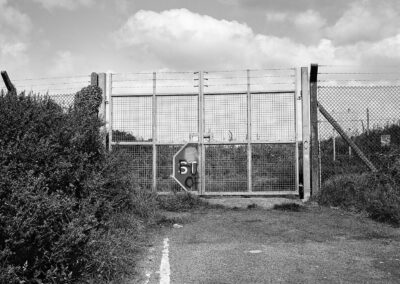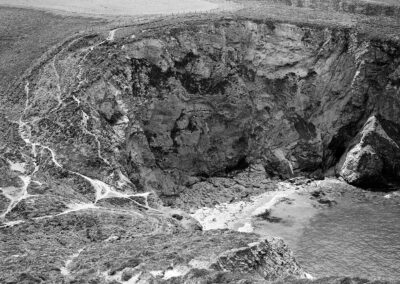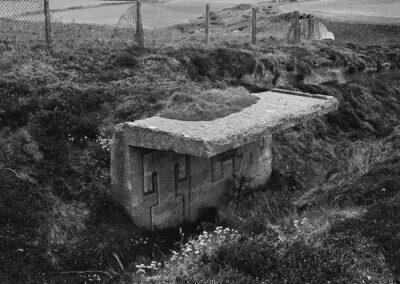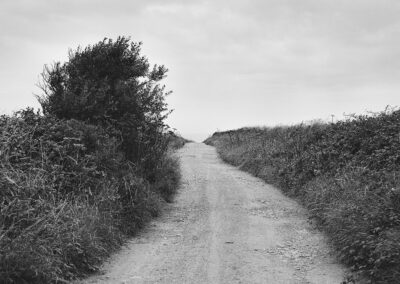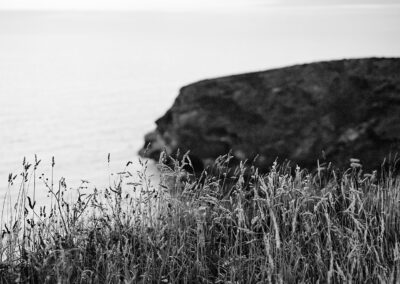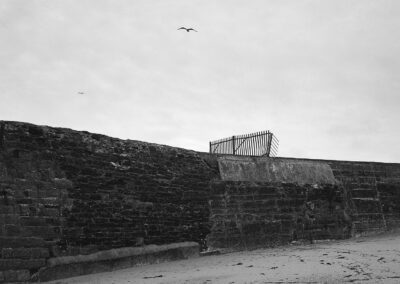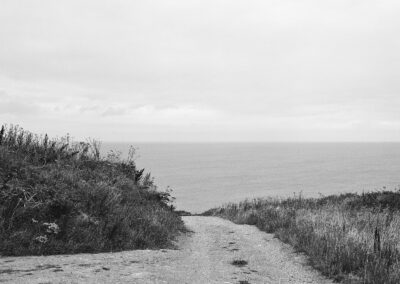
Opposing Identities of Place
Nancekuke Common is situated on an isolated cliff top between the villages of Portreath and Porthtowan on the north coast of Cornwall. With uninterrupted horizons and far-reaching coastal views, it is an alluring and beautiful space to visit and to engage the natural world. Within its majestic, panoramic coastal views, Nancekuke Common hides a sinister past.
Amid rising tensions of the Cold War, Nancekuke Common, then the site of the former wartime RAF Portreath, was recommissioned into government service once again. Based on information that the Soviet Union could produce weapons of mass destruction, Winston Churchill had decided that Britain must also possess its own independent facility for the manufacture and development of deadly nerve agents. Far from prying eyes, Nancekuke was selected for its remote location. Together with a sparsely populated local community and convenient access to the sea for the disposal of chemical waste, Nancekuke the ideal site to produce Sarin, the world’s most lethal chemical weapons. In 1950, the former RAF Portreath became the ominously named Chemical Defence Establishment Nancekuke.
Utilising technology recovered from Nazi Germany after World War Two, Nancekuke became a secure government facility where some 20 tonnes of Sarin nerve gas were secretly manufactured. Although Great Britain itself never used its Sarin Gas, the weapon continued to be transferred to the United States and used offensively until 1964.

Changing attitudes towards chemical warfare and the 1976 defence review signalled the end of production at Nancekuke. The last batch of Sarin left Nancekuke in May 1977 headed for Porton Down in Wiltshire where chemical weapons research was to continue. The manufacturing facility at Nancekuke was decommissioned and finally demolished in 1980, with the resulting debris being buried within the perimeter of the site. To achieve this, four specially excavated pits were prepared and waste material from the site was buried within them like graves. Two ancient Tin mines were also repurposed to dispose of defunct machinery, discarded deep below the surface. Additionally, a small disused quarry within Nancekuke was filled with crushed concrete and steel work from the former buildings, hiding from sight any evidence of the activities at Nancekuke.
Today, the site continues to be operated by the Ministry of Defence. Now it is known as Remote Radar Head Portreath and staffed by the RAF. With its disturbing history, Nancekuke remains shrouded in relative secrecy. This project documents Nancekuke and its surrounding area as it is found today. The rugged natural beauty of the coast is juxtaposed with a secretive and sinister past, leaving the informed visitor to contest opposing identities of place. There is a duality of place within the landscape of Nancekuke. This work presents images offering the viewer conflicting interpretations of place; those of beauty, serenity and nature are challenged by remnants of a sinister past, where a human desire for widespread destruction remains present within the landscape.
The Nancekuke project records the rugged vistas and the ever-changing seascape of the area, whilst acknowledging it as a place with a lethal and unsettling history when viewed through a contemporary lens.
A selection of the images from the series are shown below (click to view image at full size / original format).
ABOUT MICHAEL CROCKER
Michael Crocker’s creative practice is centred around photography of the landscape and the agency that can be formed between place, artist, and visual outcome. His work creates a visual response to the phenomenological link between spatial experience and consciousness and is often informed by literary sources recording experiences of place. The notion of what we consider place to be within space is an area of interest within his image making.
After a 15-year career in commercial photography and publishing, he slowly made the transition into arts education. Michael Crocker currently lectures in Photography alongside developing his own creative practice.
Website: michael-crocker.co.uk
Instagram: @photomike1981
CREDITS
Unless otherwise stated, all words and images in this article are © Michael Crocker

